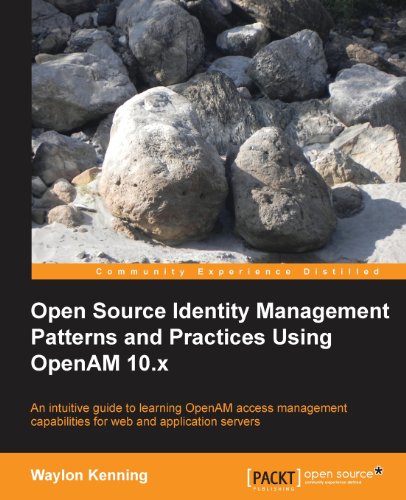

Most ebook files are in PDF format, so you can easily read them using various software such as Foxit Reader or directly on the Google Chrome browser.
Some ebook files are released by publishers in other formats such as .awz, .mobi, .epub, .fb2, etc. You may need to install specific software to read these formats on mobile/PC, such as Calibre.
Please read the tutorial at this link: https://ebookbell.com/faq
We offer FREE conversion to the popular formats you request; however, this may take some time. Therefore, right after payment, please email us, and we will try to provide the service as quickly as possible.
For some exceptional file formats or broken links (if any), please refrain from opening any disputes. Instead, email us first, and we will try to assist within a maximum of 6 hours.
EbookBell Team

0.0
0 reviewsAn intuitive guide to learning OpenAM access management capabilities for web and application servers
Overview
In Detail
OpenAM is a web-based open source application that provides authentication, authorization, entitlement and federation services. OpenAM provides core identity services to simplify the implementation of transparent single sign-on (SSO) as a security component in a network infrastructure. It also provides the foundation for integrating diverse web applications that might typically operate against a disparate set of identity repositories and that are hosted on a variety of platforms such as web application servers.
Open Source Identity Management Patterns and Practices Using OpenAM 10.x is a condensed, practical guide on installing OpenAM to protect your web applications. This book will teach you how to integrate to different identity sources such as Active Directory or Facebook using two-factor authentications.
Open Source Identity Management Patterns and Practices Using OpenAM 10.x looks at Identity Management and how to implement it using OpenAM 10.x. It specifically focuses on providing authentication to your web application using either a local identity source or a cloud-based identity source, so you don’t have to worry about authentication in your application.
You will learn how to install OpenAM, and then how to install policy agents against your web and application servers to do authentication. In addition, we’ll focus on integrating to applications directly using SAML, either through the use of a small preconfigured application, or through a third-party SAML library. Finally, we’ll focus on integrating to cloud identity providers using OAuth 2.0 and utilizing two-factor authentication.
If you want a scalable robust identity management infrastructure, Open Source Identity Management Principles and Patterns Using OpenAM 10.x will get you up and running in the least amount of time possible.
What you will learn from this book
Approach
This is a Packt Mini in a tutorial format that provides multiple examples on Identity Management using OpenAM 10.x.
Who this book is written for
Open Source Identity Management Patterns and Practices Using OpenAM 10.x is great for developers and architects who are new to Identity Management, and who want a brief overview of what’s possible and how to quickly implement a prototype. It’s assumed that you’ve had experience with web applications and some knowledge of Apache and Tomcat.